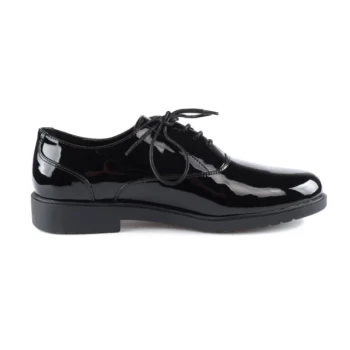When choosing warm winter shoes, prioritize insulation, waterproofing, and traction to combat cold, wet, and slippery conditions. Breathability and durability ensure long-term comfort and value, while proper fit prevents discomfort and foot issues. The right pair should align with your activities—whether daily commuting, outdoor work, or recreational winter sports—to provide both warmth and functionality.
Key Points Explained:
-
Insulation
- Look for materials like Thinsulate, fleece, or wool linings that trap heat without excessive bulk.
- Consider the temperature rating (e.g., -20°C) to match your climate.
-
Waterproofing
- Opt for sealed seams and membranes (e.g., Gore-Tex) to keep feet dry in snow or slush.
- Avoid merely water-resistant options if facing prolonged wet conditions.
-
Traction & Non-Slip Soles
- Deep lugs and rubber compounds (e.g., Vibram) improve grip on ice.
- Flat or worn soles increase fall risks—prioritize tread patterns designed for winter.
-
Breathability
- Moisture-wicking linings prevent sweat buildup, reducing frostbite risk.
- Ventilation zones (e.g., mesh panels) balance airflow without compromising warmth.
-
Durability
- Reinforced toe caps and abrasion-resistant uppers (e.g., leather) extend shoe life.
- Check stitching and sole bonding quality to withstand repeated use.
-
Fit & Support
- Ensure room for thick socks but avoid excess space that causes blisters.
- Arch support and ankle stability are critical for walking on uneven terrain.
-
Activity-Specific Needs
- Work: Safety toes (steel/composite) and puncture-resistant soles for job sites.
- Hiking: Lightweight designs with ankle support for trails.
- Urban Use: Stylish yet insulated options for daily wear.
-
Budget & Longevity
- Invest in quality materials (e.g., genuine leather) for multi-season use.
- Balance cost with expected wear—cheaper shoes may lack insulation or fall apart quickly.
-
Comfort & Break-In Period
- Test shoes with the socks you’ll wear to assess fit.
- Avoid stiff designs that don’t flex naturally with your stride.
-
Additional Features
- Reflective details for low-light visibility.
- Removable insoles for orthotic compatibility.
By evaluating these factors holistically, you’ll find winter shoes that blend warmth, safety, and practicality—quietly enhancing daily comfort in harsh conditions.
Summary Table:
| Feature | Key Considerations |
|---|---|
| Insulation | Materials like Thinsulate, fleece, or wool; check temperature ratings (e.g., -20°C). |
| Waterproofing | Sealed seams, Gore-Tex membranes; avoid water-resistant-only options for wet climates. |
| Traction | Deep lugs, Vibram soles; avoid flat/worn treads to prevent slips. |
| Breathability | Moisture-wicking linings; mesh panels for airflow without losing warmth. |
| Durability | Reinforced toe caps, abrasion-resistant uppers (e.g., leather), quality stitching. |
| Fit & Support | Room for thick socks; arch/ankle support for stability on uneven terrain. |
| Activity-Specific | Work: Safety toes; Hiking: Lightweight ankle support; Urban: Stylish insulation. |
| Budget | Invest in quality materials (e.g., leather) for longevity vs. cheap short-term options. |
Ready to equip yourself or your customers with high-performance winter footwear? As a leading large-scale manufacturer, 3515 specializes in producing premium winter shoes and boots tailored for distributors, brand owners, and bulk buyers. Our extensive range combines cutting-edge insulation, waterproofing, and ergonomic designs to meet diverse needs—from rugged work boots to stylish urban winter shoes. Whether you’re sourcing for retail shelves or outfitting a workforce, we ensure durability, comfort, and safety in every pair.
Contact us today to discuss bulk orders, customization options, or samples—let’s keep the world warm, one step at a time!
Related Products
- Customizable Slip-On Safety Shoes Direct from the Factory for Wholesale
- Athletic Safety Shoes with Dial Closure & Steel Toe for Wholesale & Custom Manufacturing
- Puncture-Resistant Velcro Safety Boots for Wholesale & Custom Manufacturing
- Wholesale Anti-Smash & Puncture-Proof Safety Shoes Custom Manufacturing for Brands
- Wholesale Safety Footwear Manufacturer for Bulk & Custom OEM Orders
People Also Ask
- Is it normal to wear shoes in the house? Cultural Norms & Hygiene Explained
- How do shoes prevent injuries indoors? Essential Footwear Safety Tips
- How should women's work boots be cared for and maintained? Essential Tips for Longevity
- Are quality shoes a good financial investment? Long-Term Savings & Comfort Explained
- Why is traction important in work boots, and what sole features enhance it?



















